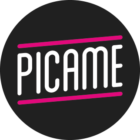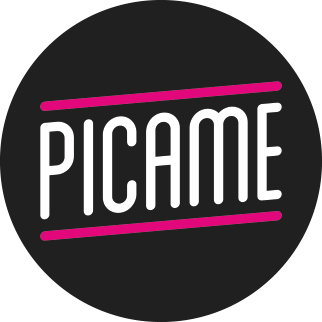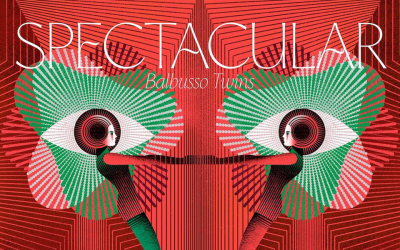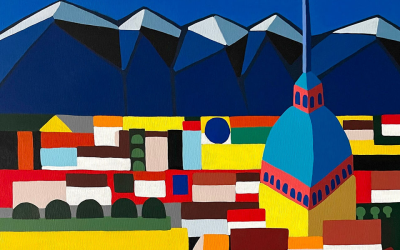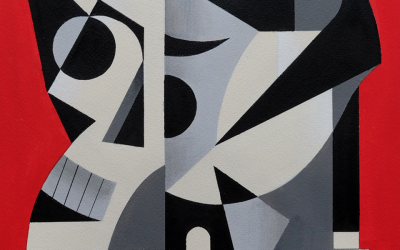
Visionario, eccessivo, sognatore, Fabio Novembre ammette che le sue creazioni rispondono più a esigenze personali che alla soddisfazione di bisogni collettivi. I suoi spazi seduttivi e i suoi oggetti iconici – sedie come il negativo di corpi, vassoi in forma di piazze, tavoli con gambe di corda, divani come nastri infiniti e poltrone come maschere – ne hanno fatto uno dei designer più interessanti e affermati della scena internazionale. I suoi progetti nascono per raccontare storie e i suoi punti di riferimento sono, oltre ai grandi del design contemporaneo, anche gli esempi forniti da altri ambiti, dal cinema alla musica, dall’arte alla natura e alla moda, in una rete di riferimenti, relazioni, connessioni e somiglianze che è “fonte di vita e di ispirazione continua”.
Non sappiamo ancora come ci siamo riusciti ma gli abbiamo strappato questa intervista esclusiva. Godetevela prima che se ne accorga! Pìcame meets Fabio Novembre.
Visionary, excessive, day-dreamer, Fabio Novembre admits that his creations come out from personal needs more than from collective ones. With his seductive spaces and iconic objects – chairs that are the negative of the human body, trays inspired to famous Italian squares, table with rope legs, sofa as endless stripes, armchairs as masks, Fabio Novembre has become one of the most interesting and leading designer at international level. His projects born for telling stories and his points of reference come, apart from the big names belonging to the contemporary design field, also from examples taken from cinema, music, art, nature, fashion in a continuous crossed reference, relations, connections and resemblances that is “a never-ending source of life and continuos inspiration”. We are still pretty wondered of having obtained this exclusive interview so enjoy it before he realizes it! Pìcame meets Fabio Novembre. [Full translations at the end of the post]
(Photo: Insegna anche a me la libertà delle rondini, Rotonda della Besana, Milano 2008)
Ciao Fabio, benvenuto su Pìcame. Iniziamo con una cosa che ci accomuna: Pìcame, tra le altre cose, è un blog e anche tu ne hai uno, IoNoi. Raccontaci come è nato questo progetto.
IoNoi nasce nel 2009 e si caratterizza per il fatto di essere un blog di immagini che lavora sulle associazioni, sul pensiero laterale. Il nome deriva da un episodio che vede Muhammad Ali protagonista: in visita all’Università di Harvard per una lecture sull’importanza dell’educazione e della cultura, alla richiesta di uno studente di recitare una poesia lui risponde “Io, Noi” il più breve componimento nella storia della letteratura. Che cosa significa tutto questo? Che l’interazione e lo scambio al giorno d’oggi sono tutto. Solo dal confronto con le altre persone si cresce, si impara a conoscere noi stessi, gli altri e ad ascoltare. E proprio il nome ioNoi evidenzia questo rapporto tra io e noi, tra le cose e il loro universo di riferimento. Le persone e le cose nascono da altre persone e da altre cose. Cercare le connessioni, spesso non progettate o non dichiarate, serve a facilitare un approccio alla conoscenza inclusivo e trasversale. La storia non si svolge per comparti, tutto è contemporaneamente causa ed effetto.

Stuart Weitzman, Shop Roma, 2006
Un fluire continuo quindi, un ciclo che come l’uroboros, il serpente che si morde la coda simbolo del tuo studio, rappresenta un’incessante trasformazione…
Citando Lavoisier: “nulla si crea, nulla si distrugge, tutto si trasforma”. E lo sai che l’uroboros è uno dei più antichi simboli della storia? Tutto attorno a noi muta, si evolve, tra la nascita e la morte. La vita che scorre, nella sua inesorabilità, trova il suo riscatto soltanto attraverso l’amore.
Oggi si sente tanto parlare di creatività, di lavori creativi. Tu come ti definisci: un architetto, un designer, un battitore libero?
La creatività è il lubrificante di qualsiasi processo produttivo. Se dovessi trovare una definizione per le persone creative le paragonerei a delle antenne capaci di percepire l’ignoto. Credo anche che la creatività sia quasi come una necessità impellente, hai bisogno di tirarla fuori per non impazzire. Le due cose non sono in contraddizione dato che l’antenna non è fatta per accumulare bensì per captare e divulgare, e se non assolve a questo ruolo va in crisi di identità. Per quanto riguarda me invece, io amo definirmi prima di tutto un sognatore e un cantastorie: mi interessa la narrazione, la comunicazione con gli altri attraverso le storie che metto in scena con i miei spazi. Ho capito con il tempo che fare l’architetto non sarebbe stato un mestiere ma un approccio alla vita.

Moscow Design Week, Moscow, October 2010

Design Victims, Org Table and Net Carpet for Cappellini, 2001
Il design, anche di quello se ne sente parlare tanto, troppo. Tu sei profondamente diverso dai designer tuoi connazionali. Da cosa dipende questo scarto così marcato?
Il design italiano sta attraversando una crisi di identità sostanzialmente estetica, e per quanto possa essere considerato un’eccellenza, soffre comunque degli stessi mali del nostro Paese: vecchio, provinciale, un po’ cialtrone, ma sopratutto brutto, e l’Italia, che è sempre stata famosa per la sua grande concentrazione di bellezza, è come se avesse perso il timone estetico, con conseguente tracollo etico. L’italiano è per natura un affabulatore, un cantastorie capace di trasformare il vissuto individuale in parabola universale. E se il nuovo significato di design italiano si riferisse alla nostra capacità di far innamorare? L’amore è l’unica piattaforma per la soluzione dei problemi, il vero antidoto all’individualismo. Dovremmo amare e provare diletto, ovvero essere amatori e dilettanti, per sfuggire alle finte certezze del professionismo. C’è chi ha definito gli italiani un popolo di buoni a nulla capaci di tutto, ed è quel tipo di capacità che dovremmo recuperare. Dovremmo giocare a chiudere il cerchio (ri)produttivo in un girotondo di creazioni libere, inutili, perfette. Fare progetti come fiori, senza valutarne l’utilità immediata ma semplicemente per la gioia che sanno regalare. In fondo “per fare tutto ci vuole un fiore”.

Book “Il Design Spiegato a Mia Madre”, Rizzoli, 2009
Qual’è la dote più importante che un giovane dovrebbe avere? Che consiglio daresti a chi, come noi di Pìcame, crede in un progetto e desidera portarlo avanti nonostante le difficoltà?
La dote fondamentale è la curiosità. Davvero imprescindibile, assieme alla concentrazione senza la quale nessun lavoro si può portare fino in fondo. Quando mi sono laureato mi sentivo un po’ deluso. Credo che l’architettura sia molto difficile da insegnare, l’architettura va sentita, va percepita. Si può insegnare un atteggiamento, si può insegnare a essere sensibili, a guardare le cose con curiosità, questo si può fare ma non si può spiegare cosa sia l’architettura. Come a dire io posso insegnarti le parole, ma poi sei tu che devi articolare e costruire discorsi sensati. Questo è un discorso che vale per tutti i campi, non solo per l’architettura ed è stato un grande insegnamento. Credo che i giovani di oggi debbano capire che è fondamentale trovare il proprio linguaggio, il proprio modo di esprimersi che può solo derivare da una conoscenza di sé. E poi la capacità di mettersi in discussione e di osare. Come dico spesso “ A forza di fare passi più lunghi della gamba, finisce che le gambe ti si allungano davvero!”.
La prima cosa che leggi quando arrivi in studio, il primo sito che visiti.
Intanto ammetto che la mia lettura dei giornali è quasi sempre online. Quindi Corriere e Repubblica con divagazioni varie. Poi siti di design come Notcot, Dezeen, ffffound, per poi fare un check su facebook e twitter…
Un film recente che ti è piaciuto particolarmente.
“Exit Through the Gift Shop”, il lungometraggio diretto da Banksy presentato al l’ultimo festival di Sundance.

Him& Her, Casamania, 2008
Vai all’Ikea?
Non abbastanza spesso.
Una cosa senza la quale non potresti stare.
Posso fare a meno delle cose, non delle persone.
E una invece di cui faresti a meno.
Voglio tutto ma non ho bisogno di niente 😉
Un libro che avresti voluto leggere e non ci sei mai riuscito.
Se avessi voluto l’avrei letto…
Se potessi essere un regista chi saresti? E quale film avresti voluto girare?
Io mi sento particolarmente legato a Fellini, e credo che 8 e 1/2 sia un assoluto capolavoro.
Quando ti vengono le intuizioni migliori?
Le idee ti tendono imboscate a ogni angolo di strada, basta non stare mai fermi.
Quanto sei legato alla tua terra d’origine, la Puglia e alla tua famiglia?
Di base non sono affatto un campanilista, ma credo comunque che il luogo in cui nasci rimanga indelebilmente inciso dentro di te. Memorie, odori, sapori, continuano a inseguirti in età adulta, riaffiorando inaspettati nelle situazioni più disparate. La Puglia è un luogo speciale, per la sua storia, la sua geografia, il suo cibo, il suo attuale Governatore… Mi piace sapere che è il luogo in cui sono nato.
Il tuo principale difetto e la tua qualità migliore.
La mancanza di riservatezza e l’ottimismo.
Una cosa che sai fare benissimo e una che proprio non ti viene.
Non mi viene in mente niente che so fare benissimo. Ma altrettanto qualcosa che proprio non so fare…
Un rimpianto.
Cito Robbie Williams: “no regrets, they don’t work. No regrets now, they only hurt”.
Un rimorso.
Rimorso vuol dire fare un bilancio severo della propria vita, rimarcando le proprie responsabilità passate e presenti. Ma questo è un esercizio giornaliero che impongo a me stesso per non cadere nel limbo dell’autoindulgenza.
Che cosa ti fa paura?
Il fanatismo.
Stato d’animo attuale?
In equilibrio.
Il tuo motto.
Fare meno, farlo meglio.
Sono più importanti le domande o le risposte?
Sono due facce della stessa medaglia.

Abarth chair, Casamania, 2009

Il Fiore di Novembre, Triennale of Milan, 2009

—————————
Hi Fabio, first of all welcome on Pìcame. Let’s begin with a matter that we have in common: Pìcame is a blog an you also have one, IoNoi. Tell us how the project is started. IoNoi born in 2009 and its characteristic is of being a blog made of images that works on associations and on lateral thinking. The name derives from an episode with Muhammad Ali as protagonist: Visiting the Harvard University for a lecture focusing on the importance of education and culture, a student asked him to recite a poem, the old champion hesitated a moment and then said, “Me, we”: the shortest poem in the history of literature. What does it mean?That today interaction and exchange are the core of everything. Only from the relationship with other people is possible to grow up, learn, get to know one’s self, the others and listen. The name IoNoi underlines this relationship between me and you, between things and their universe. Things and people born from other things and other people. Search for the connections, most of the time not previously arranged or declared, eases a knowledge approach inclusive and traversal. History does not proceed in sections, everything is ruled by cause and effect.
An ongoing flow, a cycle that as the uroboros, the snake that bites its tail symbol of your studio, represents a never-ending transformation… Citing Lavoisier: “Nothing is lost, nothing is created. Everything is transformed.” Do you already know that the uroboros is one of the most ancient symbol of history? Everything around us changes, evolves between birth and death. Life that flows, in its relentlessness, finds out its redemption through love.
Today the word creativity and creative jobs are abused. How would you define yourself: an architect, a designer, a free player? Creativity is the lubricant of each productive process. If I should define creative people I would say that they are as antenna able to pick up the unknown. I also believe that creativity is like a urgent need you need to release it or you risk to go crazy. The two things are not contradicting one another as the antenna is not made for collection but for receive and spread and if it not perform the role it undergoes identity crisis. According to me, I prefer define myself as a dreamer and a storyteller: I’m interested in stories, in communication and in the tales I create using space. I have learnt trough life that being an architect is not a job matter but a way of life.
Design, also this word is abused. You are really different from the designer sof your country. What contributed in creating this difference? Italian design is living a deep aesthetic crisis and, beyond the fact that it still remains an excellence, is suffering the same evils of our country: old, narrow minded, a bit bungler but most of all ugly and Italy, that has always been famous for its beauty, seems now to have lost the way to aesthetic with, as a consequence, a deep ethic collapse. The typical Italian is par excellence, a raconteur able to turn his personal experience in a universal parable. And if the new aim of the Italian design should be to make people fall in love? Love is the only solution to the problems around us, the real antidote to individualism. We should love and be delightful, be lovers and amateur to escape from the false certainties that the job provides us. Someone has defined the Italian people good for nothing but capable of anything and it’s that skill that we should try to recover. We should play to close the (re)productive loop of free creation, useless, perfect. Create projects as flowers without valuing their real use but only for the pleasure they are able to rise. Above all “flower owns the power of everything”.
Which is the most important quality that young people should have? Do you have an advise for who, as us of Pìcame, believe in a project and desire to carry on besides the many difficulties? The most important quality is curiosity. Absolutely, together with concentration, essential to bring to an end every project. When I graduated I was a bit upset. Architecture is a really difficult matter to teach, you should feel it, perceive it. You could teach a way to look at things, to be sensible but not what architecture is. As to say I give you the words but it’s up to you to create a meaningful sentence. This is a statement true for many fields not only related to architecture. I think that young people should understand that is fundamental to find a personal language, a way of expression that could rise only from the knowledge of oneself. The ability of risk and to challenge are the others essential together with the wit I often say “Bit off more than you could chew”.
The first thing you read when you enter in your studio and the first site you visit. First of all I admit that I read the newspaper most of all online. Than I visit Corriere, Repubblica and different design sites as Notcot, Dezeen, ffffound finishing with a check on Facebook and Twitter…
A movie that recently you liked the most. “Exit Through the Gift Shop”, the full-length film directed by Banksy and presented at the last Sundance Festival.
Do you go to Ikea? Not quite often.
A thing you could not live without. I could renounce things but not people.
And one you would renounce to. I want everything but I need nothing 😉
A book you would have liked to read but you didn’t find the time. If I had really desired it I would have done it…
If you could have the chance to be a film-maker who would you have liked to be and which film would you have liked to record? I really admire Fellini and 8 e 1/2 is a total masterpiece.
When do you have your best intuitions? The best intuition comes out from every corner.
Do you feel a special relationship with your region, the Puglia and your family? I’m not a parochial person but I believe that the place where you born remain forever with you. Memories, flavours, smells come out unexpectedly during your life. Puglia is a special place, for its history, geography, food and its actual Governor…I really appreciate that it’s the place where I was born.
Your main defect and your best quality. I don’t have a strong sense of privacy but I’m optimistic.
A thing you could do really well and another in which you don’t succeed. I’m not able to think at nothing that I’m really able to but, at the same time, I could not find out something I’m really bad in.
A regret. Citing Robbie Williams “no regrets, they don’t work. No regrets now, they only hurt”.
A remorse. To feel remorse means that you have made a rigid review of your life, underlying the past and present responsibilities missed. For me it’s a daily exercise that I do to avoid risking to be self-indulgent.
What scares you? The fanaticism.
Actual mood? Balanced.
Your motto. Do less, do it better.
Are more important questions or answers? They are both side of the same aspect.
